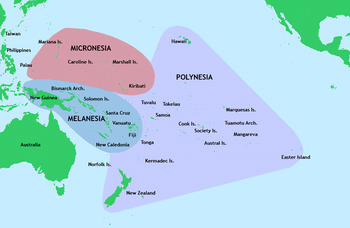Navigation: Similes, Metaphors, Vocabulary and a Polynesian Voyage
- Word Document File
Description
This lesson uses lyrics from a 1988 rock song by Crowded House to give students practice in interpreting similes and metaphors to discover underlying meaning. While the song seems to be about a stormy relationship between the speaker (or singer) and his lover. another interpretation indicates that the song describes a voyage of homecoming.
I have used this song to teach students about similes and metaphors but was happy to realize that it also relates to the navigation theme of the cross-curriculum unit I have been developing. The song conveys the idea of the island moving toward the sailor who is in the boat, part of traditional techniques for navigating across the open ocean in the Maori culture of New Zealand before the arrival of Europeans.
In addition to discussion and analysis of the song (either in a class group or adapted as writing prompts), I have added one of my popular vocabulary puzzles to the lesson. Students enjoy working alone or in pairs to find vocabulary words, match them with their definitions (provided) and then decode an excerpt from a text relating to the theme of the lesson.
Although the lesson stands on its own as an exploration of a literary text, it is also the first posted TpT lesson from the "Humanities Half Days" interdisciplinary unit I am developing. If you choose to use the larger unit, advice is included in this lesson for generating an "escape the room"-type of clue to be used as part of the cross-curriculum exploration of navigation.
Sample standards matching this lesson:
Craft and Structure:
CCSS.ELA-Literacy.RL.6.4
Determine the meaning of words and phrases as they are used in a text, including figurative and connotative meanings . . .
CCSS.ELA-Literacy.RL.7.1
Cite several pieces of textual evidence to support analysis of what the text says explicitly as well as inferences drawn from the text.
Integration of Knowledge and Ideas:
CCSS.ELA-Literacy.RL.8.9
Analyze how a modern work of fiction draws on themes, patterns of events, or character types from myths, traditional stories, or religious works such as the Bible, including describing how the material is rendered new.
CCSS.ELA-Literacy.RL.9-10.6
Analyze a particular point of view or cultural experience reflected in a work of literature from outside the United States, drawing on a wide reading of world literature.


